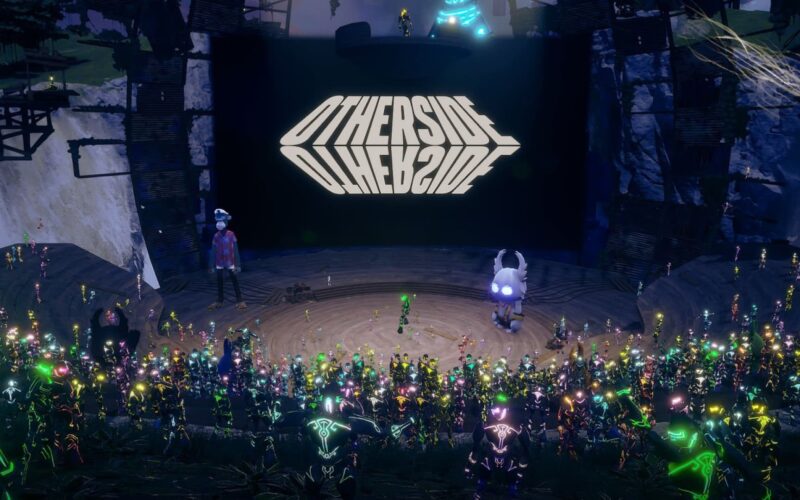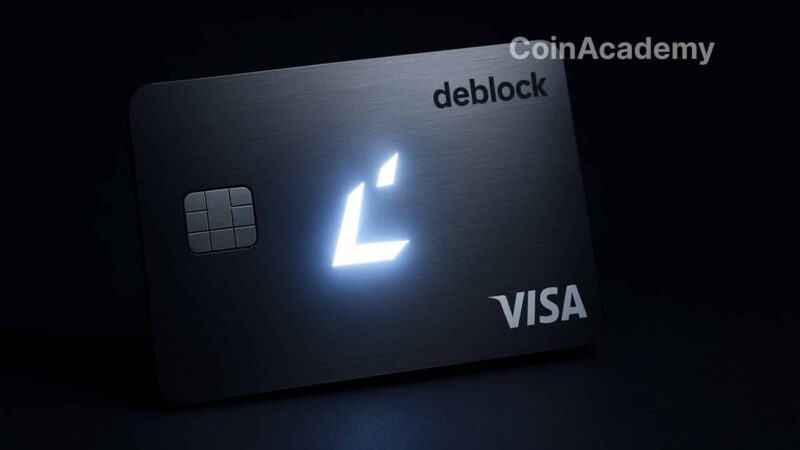This week, the “travellers” were able to discover the extent of the Otherside Metaverse, created by Yuga Labs and Improbable, through a first game experience.
On the occasion of a technical demo, the owners of Otherside lands had the opportunity to make a “trip” to The Otherside. 4,500 players were able to participate in the experience, simultaneously, directly from their internet browser.
After connecting your wallet and proving that you own a piece of land in the Metaverse Otherside, you are invited to join the thousands of other players in a vast, bright room with few textures and details. This room was used in the first tech demo to test the ability of the servers to bring so many players together in one place, while still allowing for unlimited microphone communication.
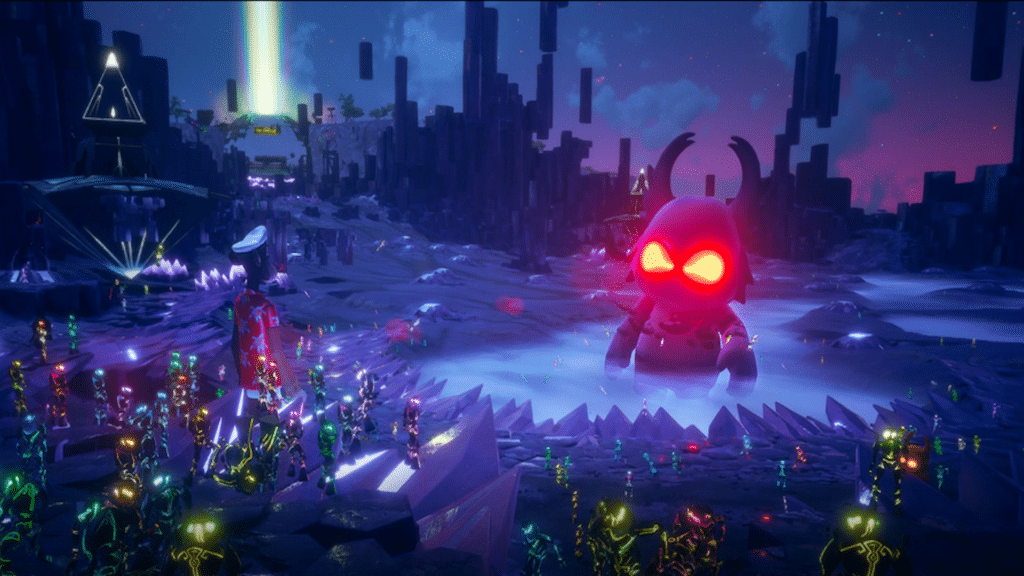
A giant Bored Ape led the technical demo and invited players to dive into a sort of black hole leading straight into the Metaverse Otherside.
This same leader then handed out several missions to the thousands of players, asking them to move around this vast world in order to save a Koda, recover obelisks and finally confront another Koda, this time turned demonic.
The trip finally ends with a very short teaser that hints at the continuation of the Metaverse Otherside:
This first demo seems to have won over most of the players and members of the Bored Ape Yacht Club, but many Internet users continue to ask many questions about the real technological advance that this Metaverse represents. In the end, players just moved around, jumped around and talked to each other in a vast open world?
If the first technical demos of the Metaverse The Otherside do not impress you. It’s probably because of a bad comparison with games like Fortnite. Remember that Fortnite has a hundred players, not thousands, and requires a next-generation console or a powerful computer to run properly with good graphics.
The real revolution lies in the fact that an impressive number of players can be onboarded even more easily, by offering them the possibility of joining the game directly from their internet browser.
Who is Improbable and why does the Metaverse Otherside impress connoisseurs?
Improbable is a multinational technology company founded in 2012 and based in London. It develops distributed simulation software for video games, employs over 1,000 people and has already raised over $500 million.
To put it simply, Improbable develops technologies useful for creating vast open worlds for video games (the Metaverse).
In 2016, Improbable partnered with Google and launched SpatialOS in open beta a year later. The first games built on this technology are Worlds Adrift and Fall Guys.

Fall Guys sold over 7 million units on the Steam marketplace and became the most downloaded game on PlayStation Plus in just 23 days.
Soon, Improbable partnered with gaming giant Epic Games to launch a $25 million fund to enable game developers to work on Unreal Engine.
With war simulation contracts for the US and British armies, partnerships with Google and Epic Games and several hundred million dollars in fundraising, Improbable is now one of the pillars of its field with a multi-billion dollar valuation.
Recently, Improbable stood out with its “Project Morpheus”. During its technical demo in 2021, the project proved to be reliable by gathering 10,000 players simultaneously, in the form of customised avatars and with the ability to communicate through a proximity voice chat.
By creating MSquared through a 150 million dollar fundraising, Improbable announces its arrival in the web3 and here we are in 2022, at the dawn of a more than interesting collaboration for the creation of a “next gen” Metaverse.
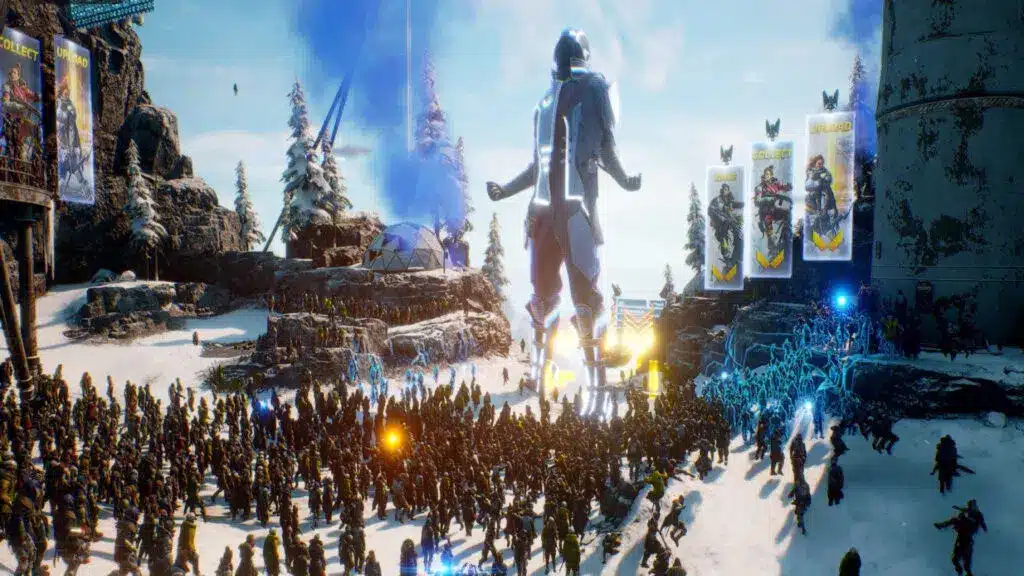
Bored Ape Yacht Club x Improbable direction le Metaverse Otherside
If Improbable seems to have all the necessary weapons to develop the Metaverse of tomorrow, it lacks a point that is essential to the success of a vast digital universe: a community.
This is where the Bored Ape Yacht Club comes in. With the biggest success story in the web3 2021 universe, Yuga Labs through BAYC has established itself as the undisputed leader in the field, even going so far as to buy out CryptoPunks and their MeeBits, the primary source of inspiration for Bored Apes.
The private club reserved for OG members, the rich and famous, was then partially opened to the rest of the web3, with the sale of Metaverse lands to create The Otherside.
The Otherside is likely to work because it is not expected to take the player into an MMORPG-like gaming experience and will not need to compete with the AAA video games in that sector. Instead, the imagination of gamers and web communities3 will enable the creation of this virtual world.
The most important point in this objective is therefore to succeed in gathering as many players as possible simultaneously while allowing them to communicate and this is exactly why the collaboration between Yuga Labs and Improbable.io seems perfect.
While many NFT collections and communities would welcome even the slightest interaction with BAYC, just being able to provide an experience for their members in a quality Metaverse that has already been built makes it much easier.
It would not be shocking to see more and more NFT communities moving to The Otherside rather than attempting to create their own Metaverse.
And to take it a step further, MSquared needs to enable other projects, brands, events and experiences in the Metaverse to connect and interact with each other.
Moreover, The Otherside’s Litepaper insists on interoperability between the different Metaverses, a crucial point for the future of this industry:
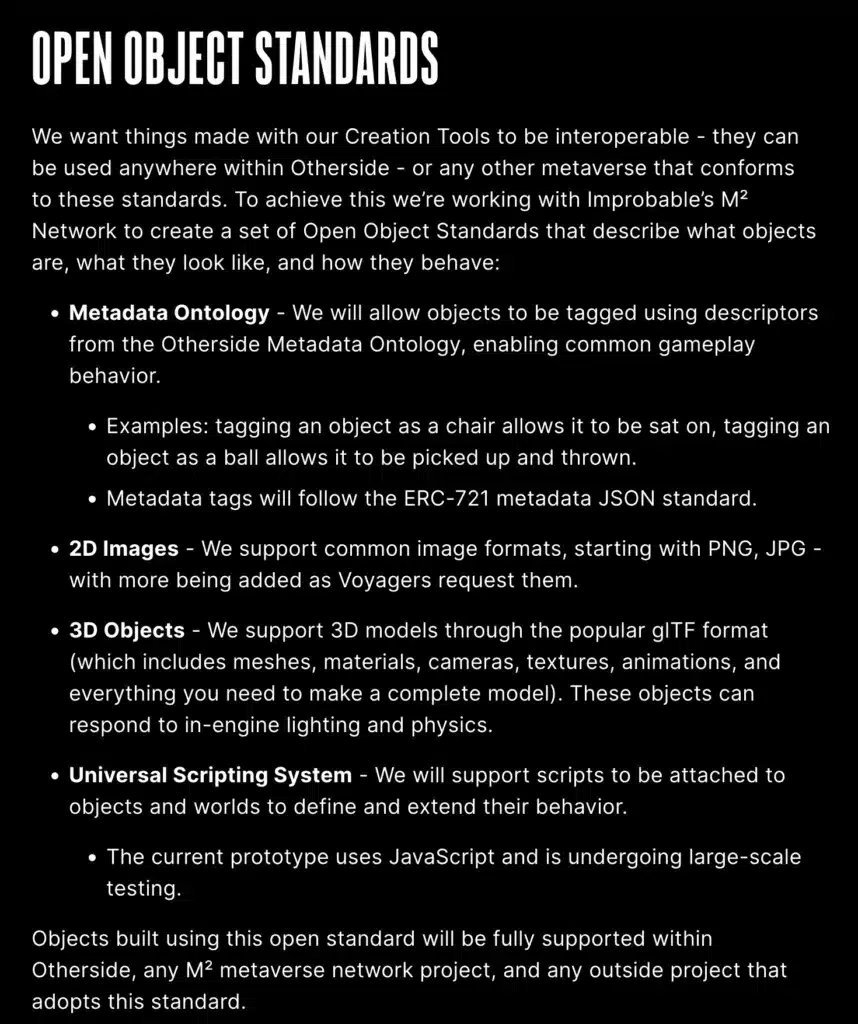
OPEN OBJECT STANDARDS
We want objects made with our authoring tools to be interoperable and to be used anywhere in Otherside – or any other metaverse that conforms to these standards. To achieve this, we are working with Improbable’s M2 network to create a set of open object standards that describe what objects are, what they look like and how they behave:
Metadata Ontology - We will allow objects to be labelled using descriptors from the Otherside metadata ontology, allowing for common behaviour
Examples: labelling an object as a chair allows you to sit on it, labelling an object as a ball allows you to pick it up and throw it
Metadata tags will follow the JSON metadata standard ERC-721
2D Images - We support common image formats, starting with PNG, JPG - and more will be added as Voyagers request them
3D Objects - We support 3D models through the popular gITF format (which includes meshes, materials, cameras, textures, animations and everything else you need to create a complete model) These objects can accommodate lighting and engineering physics
Universal scripting system - We will support scripts to attach to objects and worlds to define and extend their functionality
The current prototype uses JavaScript and is being tested at scale
Objects built using this open standard will be fully supported in the Otherside game, any MSquared metaverse network project and any external project that adopts this standard